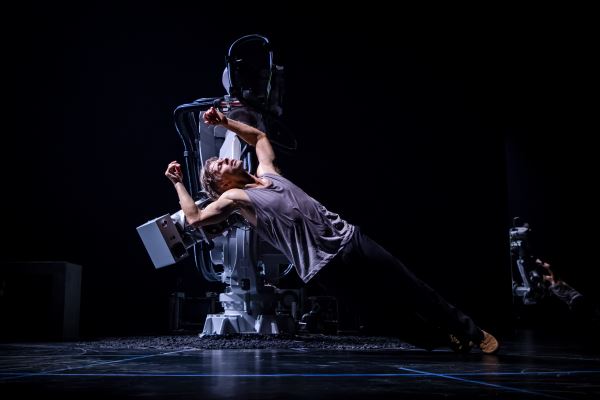In Sweden last week, two performers took the stage together for the first time at one of Stockholm’s leading theatres.
One of the performers was Fredrik "Benke" Rydman, a renowned Swedish artist who has choreographed a Eurovision Song Contest winner and advanced modern dance through his Bounce Streetdance Company. The other was a 2m tall, 900kg industrial robot from digital technology pioneer ABB.
Benke’s path-breaking duet, set to an original score, is a unique reflection of the changing role of robots, automation technology and artificial intelligence in society.
The ABB IRB 6620 robot with which he performed is more typically found in heavy manufacturing facilities, like automotive plants, where it performs spot welding and complicated assembly tasks in close collaboration with plant employees. It is one of ABB’s biggest, strongest and heaviest industrial robots.
“Benke and ABB showcased the future of human and robot collaboration last night,” said Sami Atiya, President of ABB’s Robotics & Motion division. “Together, through this beautiful and powerful performance, artists and engineers demonstrated how far technology has come, giving us a glimpse of exciting things ahead. Through this performance, we can visualize a future of simple and intuitive mastery over complex, sensitive interactions between humans and robots.”
Performances of Benke’s new work, which was met with strong reviews from critics.
The show will continue at Kulturhuset Stadsteatern in Stockholm, one of the largest and most prominent culture centres in Northern Europe, until the end of November.
The changing nature of collaborative robots
In the recent past, robots such as the IRB 6620 would have been barricaded behind protective fences, with separation zones and walls to prevent people from coming too close while the robot did its work in isolation.
Thanks to a new generation of automation and artificial intelligence technologies, today people and robots are working safely in close collaboration and in close quarters.
ABB’s latest advanced software, which is used in factories around the world, helps make this possible by enabling a collaborative robot like the ABB IRB 6620 to be aware of what is happening in its surrounding area and adjust its movements with incredible speed to keep people nearby safe. The software, called ABB SafeMove2, knows where a dancer is at all times.
Benke and a small team of ABB engineers worked together closely to program the IRB 6620 for the performance. ABB’s collaborative robots are easy and fast to program using what is known as “lead through programming” in which people hand-guide robots through the required range of motion and then record the actions on an ordinary smart tablet. In the past, programming this type of performance would have taken months to complete and required specialised technical training.
Erik Hellström, one of the engineers who helped prepare this performance, said: “Making a seamless connection to the music was difficult but working together with Benke, we made incredible strides. It is remarkable how the IRB 6620 seems to truly sense both the music and the dancer.”
The programming used for this performance is the same type that made it possible last year for another popular ABB robot, the collaborative dual-arm YuMi®, to quickly learn the complex and intricate movements needed to conduct a symphony orchestra for a live performance in Italy with famous tenor Andrea Bocelli.
ABB collaborative robots are no strangers to the public stage. In addition to conducting an orchestra, ABB robots have also supported Lady Gaga at the Grammy Awards and in concerts by Bon Jovi and deadmau5.
Also, ABB’s collaborative robots recently rang the opening bell at the NASDAQ stock exchange in New York City, solved a Rubik’s Cube in front of a room of spectators, and helped a patient with multiple sclerosis play chess.


